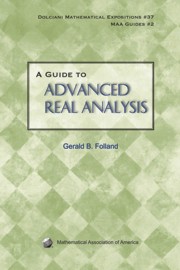Book contents
- Frontmatter
- Preface
- Contents
- Prologue: Notation, Terminology, and Set Theory
- 1 Topology
- 2 Measure and Integration: General Theory
- 3 Measure and Integration: Constructions and Special Examples
- 4 Rudiments of Functional Analysis
- 5 Function Spaces
- 6 Topics in Analysis on Euclidean Space
- Bibliography
- Index
- About the Author
2 - Measure and Integration: General Theory
- Frontmatter
- Preface
- Contents
- Prologue: Notation, Terminology, and Set Theory
- 1 Topology
- 2 Measure and Integration: General Theory
- 3 Measure and Integration: Constructions and Special Examples
- 4 Rudiments of Functional Analysis
- 5 Function Spaces
- 6 Topics in Analysis on Euclidean Space
- Bibliography
- Index
- About the Author
Summary
The theory of measure of subsets of Euclidean space (length, area, volume, and their analogues in higher dimensions) and the closely related theory of integration of functions on Euclidean space have a very long history. Much of the modern theory, however, does not depend on the particular features of the geometry of Euclidean space. It can be developed in a much more general setting with no additional effort, and in this more general form it yields results that can be applied in many additional situations.
This abstract theory is the subject of the present chapter; themethods for constructing interesting examples of measures and integrals and the study of the particular properties of these examples will be discussed in the following chapter. However, readers who prefer to anchor their thoughts in concrete situations are free to do so from the outset; we shall add a few comments at appropriate points for their benefit.
Measures
Roughly speaking, a measure on a space X is a function µ that assigns to a set E ⊂ X a number µ(E) ∈ [0, ∞], such that µ(∪jEj) = ∑j µ(Ej) whenever {Ej} is a finite or infinite sequence of disjoint sets. The following are some typical situations that give rise to measures.
If X = ℝ3, µ(E) can be the volume of E.
If X is a surface in ℝ3, µ(E) can be the surface area of E.
…
- Type
- Chapter
- Information
- A Guide to Advanced Real Analysis , pp. 21 - 40Publisher: Mathematical Association of AmericaPrint publication year: 2009



